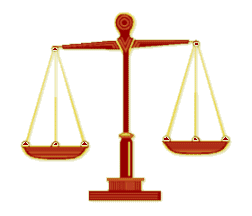Evidence (law) facts for kids
In a court of law, evidence is something that helps show if a fact is true or false. It can be an object, a document, or what someone says. Evidence must follow special rules in most places.
For example, in the United States, there are official rules called the Federal Rules of Evidence. These rules make sure all evidence used in federal courts is fair. Many US states also use similar rules. Even China has adopted some of these ideas for their own evidence rules.
Sometimes, a special order called a subpoena is used. This order makes a person or group provide documents or information needed as evidence.
Contents
What Makes Evidence Allowed?
In most legal systems, there are rules about what evidence can be used. These rules stop certain kinds of evidence from being shown in court. For example, in the US, evidence that breaks a person's constitutional rights is usually not allowed.
For evidence to be allowed, it must be:
- Relevant: It must be connected to the case and help prove or disprove something important.
- Reliable: It must be trustworthy and accurate.
Evidence that might make a jury or judge unfairly dislike a person is usually not allowed. This helps keep trials fair.
Different Kinds of Evidence
There are many types of evidence used in court cases. Each type helps to build a picture of what happened.
Testimony
Testimony is what a witness says in court while under oath. What they say is accepted as true or false based on other evidence in the case.
Real Evidence
Real evidence (also called physical evidence) is an actual object that can be looked at. This could be anything from a tool to a piece of clothing. It helps show that something exists or suggests something happened.
Hearsay Evidence
Hearsay evidence is when a witness talks about something they heard from someone else, not something they saw or experienced themselves. For example, if a witness says, "My friend told me that..." This type of evidence is usually not allowed in court because it's hard to know if it's true.
Documentary Evidence
Documentary evidence is any document shown as evidence. This could be a letter, a contract, a photo, or a report. These documents are inspected in court to find facts.
Demonstrative Evidence
Demonstrative evidence is something that shows or explains what happened. This could be a model, a map, a diagram, or even a re-enactment. It helps people understand complex events.
Eyewitness Testimony
Eyewitness testimony is when a person tells the court what they saw happen. This is given under oath. However, human memory can sometimes be tricky. Many things can affect how accurate an eyewitness's story is.
Circumstantial Evidence
Circumstantial evidence (also called indirect evidence) does not directly prove a fact. Instead, it suggests that something is likely true. For example, finding someone's muddy shoes near a muddy crime scene is circumstantial evidence. It doesn't directly prove they were there, but it suggests it. Many courts think circumstantial evidence can be very strong.
Corroborating Evidence
Corroborating evidence is used to make other evidence stronger. If you have one piece of evidence, corroborating evidence supports it and makes it more believable.
Expert Testimony
Expert testimony is evidence given by people who are experts in their field. For example, a scientist might explain how a certain chemical works. Or a banker might talk about the value of land. Their special knowledge helps the court understand difficult topics.
See also
 In Spanish: Prueba (derecho) para niños
In Spanish: Prueba (derecho) para niños


